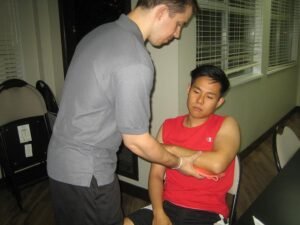Greenstick fractures are exclusive to children and considered as the most common form of fracture in the age group. The fractures that occur on children are different from adults due to the anatomical and physiological variances in the developing skeleton. Remember that the bones of children are softer and more porous than the adults, thus resulting to a different pattern of fractures.
How to identify greenstick fractures
A greenstick fracture is an incomplete break in the bone. The bones of children are relatively softer and more flexible than adults, thus they are more likely to bend than completely break. The bones can be compared to the branches of a young tree in which they bend and splinter but not fully break.
Appearance of greenstick fractures
When it comes to a greenstick fracture, it might not be as obvious with other broken bones. Since the bone does not fully break, the affected extremity might have normal size and shape. In most cases, the child can complain of pain once the area of the break is touched and exhibit guarding of the extremity when moved.

Diagnosis
The doctor might require an X-ray to identify the greenstick fracture. It is not uncommon for the doctor to request for an X-ray of both unaffected and damaged extremities to have a comparison. In some cases, a CT scan might be requested aside from the X-rays.
Treatment
The commonly used treatment for greenstick fractures is the application of a splint. The splint might be made of plaster or fiberglass that is formed based on the extremity of the child.
Remember that a splint is different from a cast. The cast completely covers the affected limb while a splint is similar to a partial cast that is draped by utilizing an elastic bandage to hold it in place. There are also some commercially-made splints available, but they do not correctly fit and results to poor restraint of the fracture.
When a splint is applied, the individual is required to follow-up with a bone specialist for further evaluation. In most cases, the individual is instructed to apply an ice pack and keep the affected extremity raised intermittently for the initial days after the injury. Medications can be given to manage the pain and swelling.
Bone healing
The bone healing process typically occurs over a span of a weeks or take up to several months. A greenstick fracture can heal relatively faster than a bone that is completely broken. The doctor might require follow-up checkups to assess how the fracture heals. Repeat X-rays might be taken to closely monitor the healing process.
